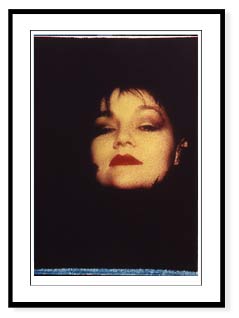|
THE
DECAMERON
The marrying of traditional and digital techniques has been part
of my repertoire of photography for 10 years. Research led me to
Nash Editions in California, who were the leaders of a new wave of
fine art digital imaging techniques to create fine art prints on
watercolour papers. I was fortunate enough to meet Mac Holbert and
Graham Nash of Crosby, Stills and Nash, who welcomed me openly. I
became one of their first clients to create fine art prints with new
technologies. The timeframe was the early 1990’s.
Different photography printing techniques always intrigued me.
About the same time as I was testing digital printing techniques
Polaroid was promoting the Polaroid image transfer method of
photography. This process involved taking a Polaroid image and then
about 15 seconds into development, separating the positive from the
negative, and transferring the negative to a fine art paper to
produce fine art prints. The resulting image had a painterly look
and was quite unique and different from conventional photography.
The process was difficult, since if you weren’t careful the emulsion
lifted off the paper when you removed the negative from the art
prints. This was especially true when you had a large black area. I
developed a way of transferring the image with minimal lift and
ended up with beautiful 8 X 10 Polaroid images, such as Sue.
 One of the problems was that when you had a good image transfer,
there was only one perfect one, since the negative could only be
transferred to an art print once. Therefore, in conjunction with
Nash Editions we scanned the image in, left the chemical residue
(blue around the edges of the image) on the image and digitally
produced fine art prints on water colour paper of any sized
desired. I could then have a limited edition art print of a
beautiful specialized image. One of the problems was that when you had a good image transfer,
there was only one perfect one, since the negative could only be
transferred to an art print once. Therefore, in conjunction with
Nash Editions we scanned the image in, left the chemical residue
(blue around the edges of the image) on the image and digitally
produced fine art prints on water colour paper of any sized
desired. I could then have a limited edition art print of a
beautiful specialized image.
The 1998 exhibition called “The Decameron” consisted of 10 portraits
of women between the ages of 22 and 52. All were non-professional
models and I wanted and got a similar expression to the sensual gaze
of the original image of Sue. Someone suggested that I add words to
the wonderful images and I was fortunate to have Bayeux Arts, Inc.
give permission to use some of the poetry by Rabindranath Tagore
from the collection called “The One And The Many.” Since the
original exhibition some new women have been added to the
collection.
|
|
 |